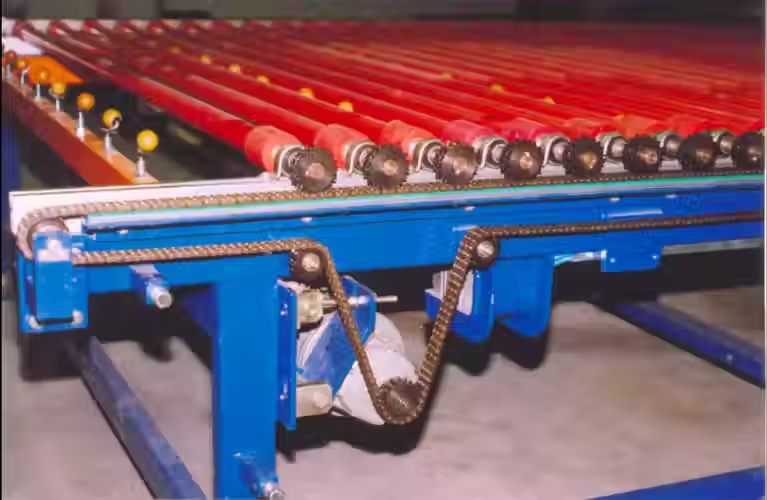Vibratory Feeder Manufacturers in Karnataka
- Jaswanth srinivas
- Nov 7, 2024
- 3 min read
Vibratory Feeder Manufacturers in Karnataka
A Vibratory Feeder Manufacturers in Karnataka is an essential piece of equipment in manufacturing, facilitating the controlled movement of various materials, such as granules, powders, and larger components, across processing lines. Widely used in industries ranging from pharmaceuticals to food production and heavy industries like mining, vibratory feeders streamline operations, improve precision, and enhance productivity by automating the feeding of materials into machines, packaging units, or conveyors.
Components and Working Principle
A vibratory feeder primarily consists of a base, spring, electromagnetic coil, and tray or bowl where materials are placed. The base provides stability and houses the electromagnetic coil, while the spring connects the tray to the base, absorbing and transferring vibrations effectively. The coil, when energized, creates a magnetic field that exerts force on the tray, causing it to vibrate. This controlled vibration pushes materials forward, typically at a slight angle, enabling steady material flow. The amplitude and frequency of vibrations are adjustable to cater to different types and sizes of materials, ensuring a consistent feeding rate.
Manufacturing Process
Design Phase: The manufacturing process begins with design considerations based on industry requirements. Factors such as material type, feed rate, desired accuracy, and environmental factors dictate the specifications. For instance, food and pharmaceutical industries may require stainless steel feeders with food-grade certifications, while heavy industries might prioritize robust, durable designs.
Material Selection: High-quality materials are chosen based on application-specific requirements. Metals like stainless steel and carbon steel are frequently used, known for their durability and corrosion resistance. Specialized coatings and treatments are also considered for abrasive materials, ensuring a longer lifespan of the feeder.
Component Fabrication: Once materials are selected, components like the base, tray, and electromagnetic coils are manufactured. CNC machines and laser cutting tools provide high precision in shaping the base and tray to exact specifications. Electromagnetic coils are wound with precision to ensure efficient energy usage and reliable vibrations.
Assembly: Components are carefully assembled to ensure proper alignment and vibration functionality. Springs are connected between the base and the tray to allow smooth vibration transfer. The electromagnetic coil is installed in the base and calibrated to generate the necessary force for material flow without causing spillage or excessive wear on the tray.
Testing and Calibration: After assembly, rigorous testing and calibration ensure the feeder operates as per the design specifications. The vibration amplitude, frequency, and feed rate are fine-tuned to ensure accurate material flow. Quality checks validate the feeder’s performance under different loads, temperatures, and environmental conditions to meet industry standards.
Finishing and Customization: Depending on industry requirements, feeders are finished with coatings or paint for added durability and corrosion resistance. Some vibratory feeders also incorporate sensors, controls, or automation features for precise feed rate adjustments, ensuring consistency even under variable conditions.
Applications and Benefits
Vibratory feeders are versatile and provide numerous advantages in manufacturing. They are commonly found in:
Food and Pharmaceuticals: Ensure controlled and contamination-free material flow.
Automotive and Electronics: Feed small parts, like screws and bolts, accurately to assembly lines.
Mining and Heavy Industries: Move large materials, such as ores, efficiently in harsh environments.
The benefits of using vibratory feeders include enhanced efficiency, minimal maintenance due to fewer moving parts, reduced human intervention, and precision in feeding, all of which reduce wastage and increase productivity. Moreover, vibratory feeders help maintain a steady workflow by regulating the material feed, ensuring the main equipment operates without interruption.
Future Trends in Vibratory Feeder Manufacturing
Automation and smart technologies are transforming vibratory feeder manufacturing. Modern vibratory feeders increasingly integrate sensors and programmable logic controllers (PLCs) to allow real-time adjustments, remote monitoring, and predictive maintenance, reducing downtime and operational costs. The trend toward sustainable manufacturing is also encouraging the development of energy-efficient feeders with advanced materials that reduce wear and environmental impact.
In conclusion, vibratory feeders play a pivotal role in manufacturing across diverse industries by ensuring a smooth, controlled, and efficient material flow. With advancements in automation and energy efficiency, the future of vibratory feeder manufacturing is set to bring even greater precision and cost-effectiveness to production lines.




Comments